Origins and Patterns of Biodiversity (Bio 2e, Chapters 18-20)
1/81
There's no tags or description
Looks like no tags are added yet.
Name | Mastery | Learn | Test | Matching | Spaced |
|---|
No study sessions yet.
82 Terms
Biological Species Concepts
Species are groups of actually or potentially interbreeding individuals that can mate and produce fertile offspring
Phylogenetic Species Concepts
A species is the smallest set of organisms that share a common ancestor, and can be distinguished from other such sets.
Morphological Species Concepts
Species are collections of living organisms that have some morphological and biochemical traits in common.
Ecological Species Concepts
A species is a set of organisms, adapted to a set of resources, called a niche, in the environment.
Biological Species Concept Author
This idea was promoted by Ernst Mayr, an evolutionary biologist who worked on birds.
Morphological Species Concept Pros
This is what most taxonomists actually use to classify specimens and describe species.
It is expedient-it can be applied to dead specimens, and even to fossils.
Morphological Species Concept Cons
It is subjective.
Species with morphological variation, and complex life histories, pose problems
Phylogenetic Species Concept emphasizes what?
the species as a lineage on the tree of life.
Ecological Species Concept must be what?
a discrete lineage recognizably different from other such lineages and with a distinct evolutionary history.
Speciation
is the origin of new species. With extinction, it is one of two keystone processes of macroevolution
In speciatation what has to occur for new species to originate
reproductive isolation
reproductively isolatation
When genetic or behavioral mechanisms evolve to keep populations of species from interbreeding
isolation mechanisms
Barriers to allele flow; without it distinct species would be impossible
Sympatric species
live in the same place
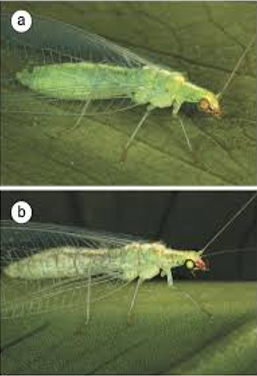
What is this an example of?
Example of sympatric speciation: Variations of Lacewings don’t reproduce due to different mating songs
Two Isolation Mechanisms
Prezygotic, and Postzygotic
Prezygotic isolation mechanisms
biological barriers that prevent mating or fertilization between individuals of different species, occurring before a zygote (a fertilized egg) can form
Postzygotic isolating mechanisms
Act after mating; prevents fertilization or prevents hybrids from passing on their genes
Two Types of Speciation
Allopatric and Sympatric
Allopatric Speciation
Involves a geographic barrier. Physically separates populations and blocks allele flow.
Sympatric Speciation does not involve a what?
geographic barrier.
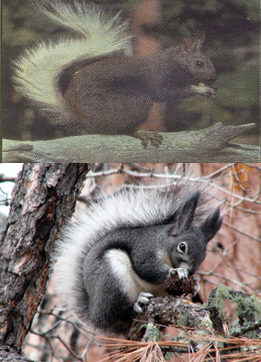
What is this?
Example of Allopatric Speciation: Two types of squirrels that underwent speciation because of the grand canyon separating the two
Sympatric Speciation results from
intrinsic factors, such as chromosomal changes and nonrandom mating
Mechanisms of Sympatric Speciation
Polyploidy, habitat differentiation, sexual selection, behavioral changes. and ecological niche specialization
Polyploidy
Condition of having more than two sets of chromosomes (3n, 4n, etc.).
Autopolyploidy
Extra chromosome sets come from one species (self-duplication).
Allopolyploidy
Extra chromosome sets come from two different species (hybridization + doubling).
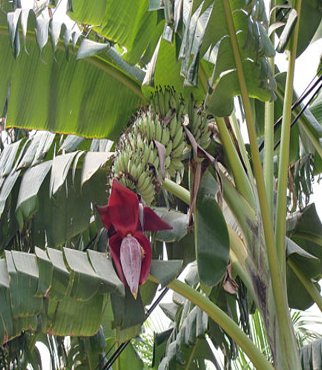
What is this example of?
The Cavendish banana is an example of sympatric speciation through allopolyploidy, with Musa acuminata being one of the sexual parent species.
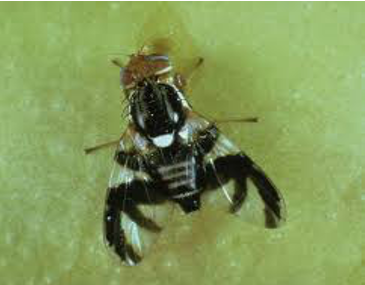
What is this example of?
Example of Sympatric Speciation: The apple maggot was a species that has originated via host shift. When apples were introduced to North America, a shift to apple hosts promoted sympatric speciation.
Are Hybridization between animal species considered new species
No because they are sterile
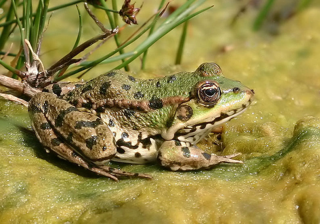
What is this an example of?
Example of hybridization producing sterile offspring: Edible frog was found to be a sterile frog from a mix between two other frog species
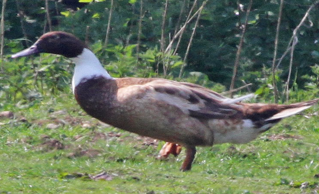
What is this an example of?
Exception to hybridzation producing sterile offspring: two distinct parent species(infertile) producing fertile hybrids
The Tree of Life
All organisms on Earth descend from a single, common ancestor.
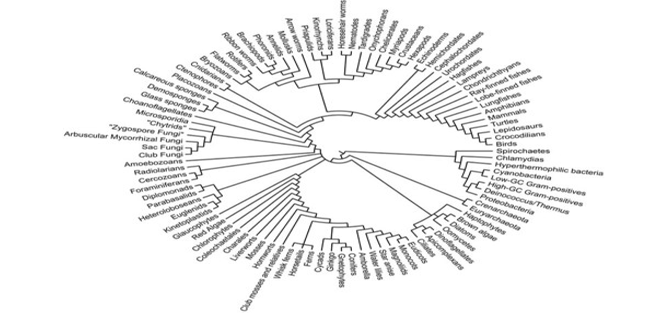
What is this?
The tree of life, a diagram that represents that actual diversification of organisms from a common ancestor
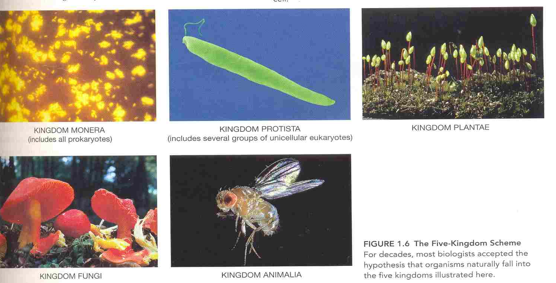
What is this?
Old Five kingdom classifcation, it does well grouping organisms based on their characteristic but doesn’t reflect evolution well
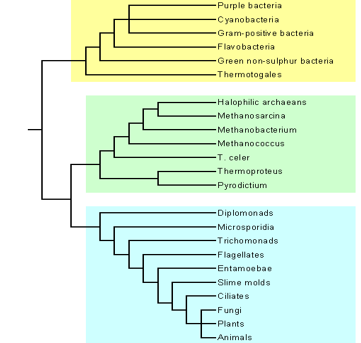
What is this?
Tree made from Karl Woese ideas on ribosomal RNA —> indicates three major domains of living things
Domains
Three large groups of Bacteria (prokaryotes) Archaea(prokaryotes), and Eukarya (eukaryotes)
Prokaryotic
cells lack a nucleus, Most of the true diversity on the planet is among them
Eukaryotic
cells possess a nucleus and membrane bound organelles
This group is “nested within” the Archaea.
How Many Species are Out There?
approximately 2 million or 8.7 million, though it may be much higher depends on which definition is used
Polling Question: Which of the following taxonomic groups has the LARGEST proportion of UNDESCRIBED species?
Beetles
Biodiversity encompasses what?
The genetic diversity within populations, communities and ecosystems, and diversity of species or lineages
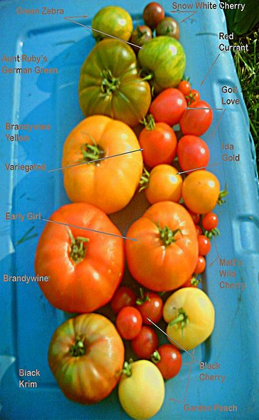
What is this an example of?
Example of Biodiversity: It originated from a single species and now have 7500 varieties with each their own distinct characteristic allele pool
Taxonomic Diversity
The different number of species an ecosystem habitat or location contains
Living things are organized into what?
communities and ecosystems

What is this?
An example of communities forming from human cultural practices: In this place it was grazed by humans and harbor unique organisms that are connected to their interactions with humans
What are some major areas of unexplored biodiversity
Tropical rainforests, ocean floor, microbial world
Global Biodiversity Patterns
Latitudinal gradient, Broad, geographical realms determined by history
Latitudinal Gradient
biodiversity increases from the poles to the tropics
Four Factors that determine Geographical range of species
History, Biological Tolerances, Other Species, a combination of the above
Examples of Physiological Factors Limiting Distribution
Palm trees cannot handle the cold so they stick to the tropics and sub tropics
What determines Local Biodiversity
Ecological Niches
Generalist species
Have a broad niche
Specialist species
Narrow niche, more extinction prone under changing environmental conditions
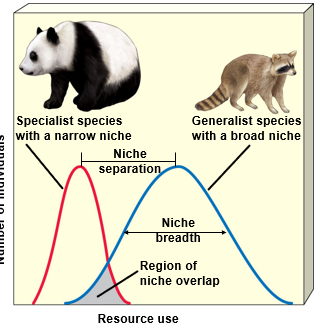
What is this
An example of generalists and specialists
Phylogeny
a group is a “family tree” describing how species are related. The branching pattern of different groups of organisms is caused by repeated cladogenesis
Systematics
is the study of phylogeny
Taxonomy
process of describing and naming organisms
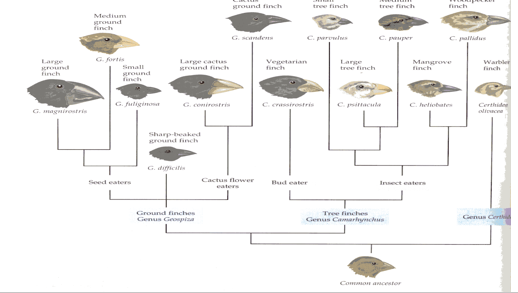
What is this
An example of Adaptive Radiation - a single common ancestor rapidly evolves into multiple new species
What is a goal of Systematics
define the tree of life in terms of ordered, monophyletic groups.
monophyletic group
is all the descendants of a common ancestor
Polyphyletic groups
do not share a common ancestor.
Paraphyletic groups
have a common ancestor, but exclude some taxa.
Cladogenesis
the origin of lineages, is the formation of a new branch on the tree of life. Caused by speciation
Homology
A trait or character state is homologous in two or more different species if they all inherited that trait from their common ancestor.
cladogram
a pattern of loss and acquisition of characters, and the subsequent passing-down of these traits to descendent species
Synapormorphy
derived trait that a group has inherited because the common ancestor of that group had a derived characteristic and passed it on.
Synplesiomorphy
an evolutionarily primitive trait that a group has inherited because the common ancestor of that group had inherited the primitive condition, unchanged, from an earlier group.
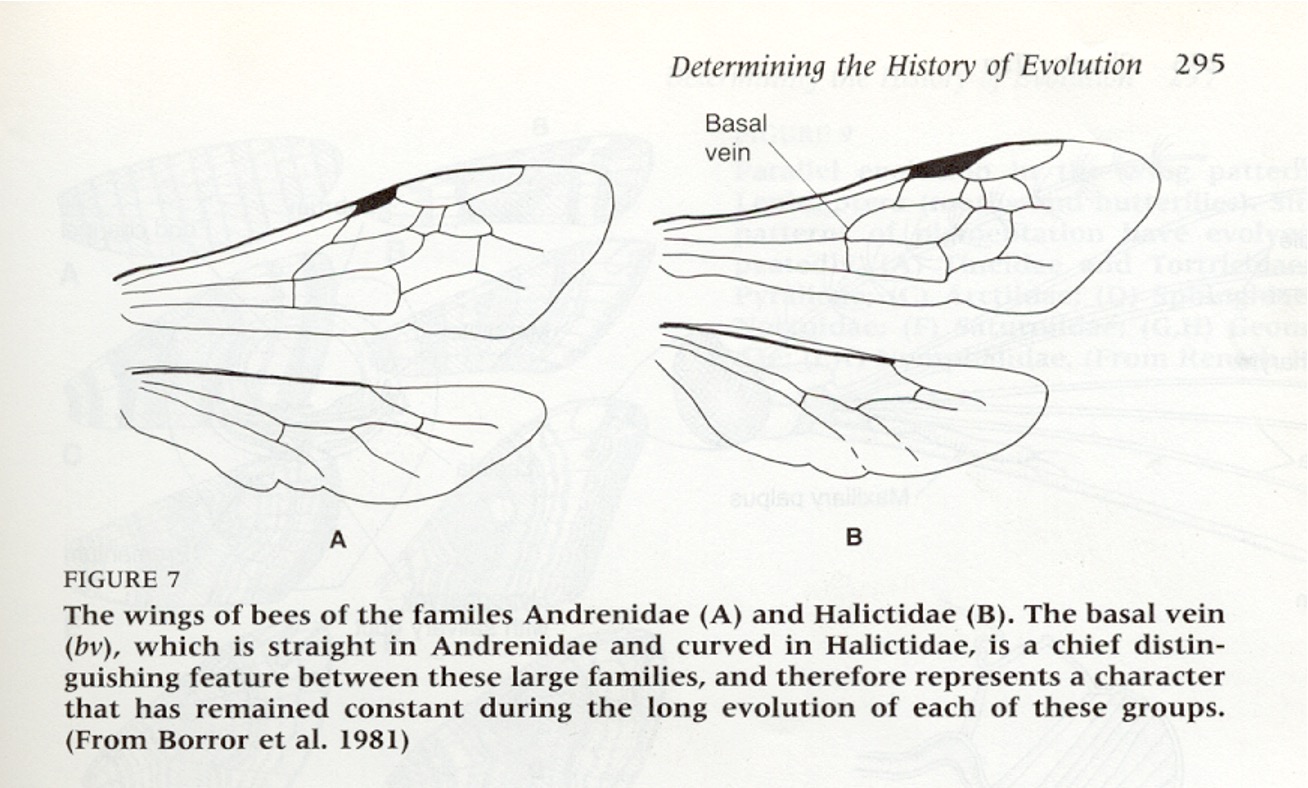
What is this?
An example of homology which is a synapormorphy
Homoplasy
When a character has evolved more than once, if possessed by two species but not present in the common ancestor
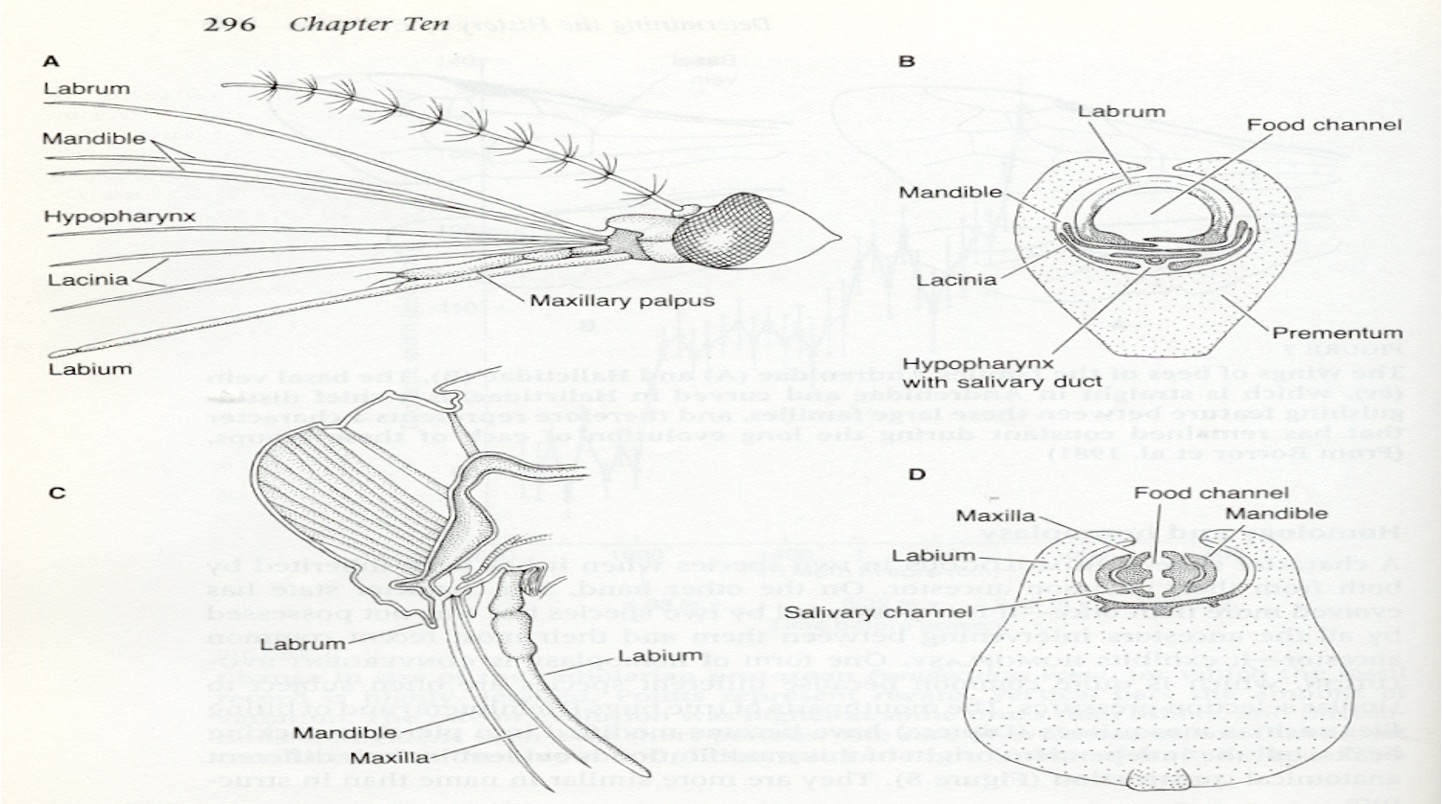
What is this?
Example of homoplasy not homology - raised from similar selective pressures
Gondwanan Distrubution
Species distribution across Southern continents of Australia, South Africa, South America, and sometimes India.
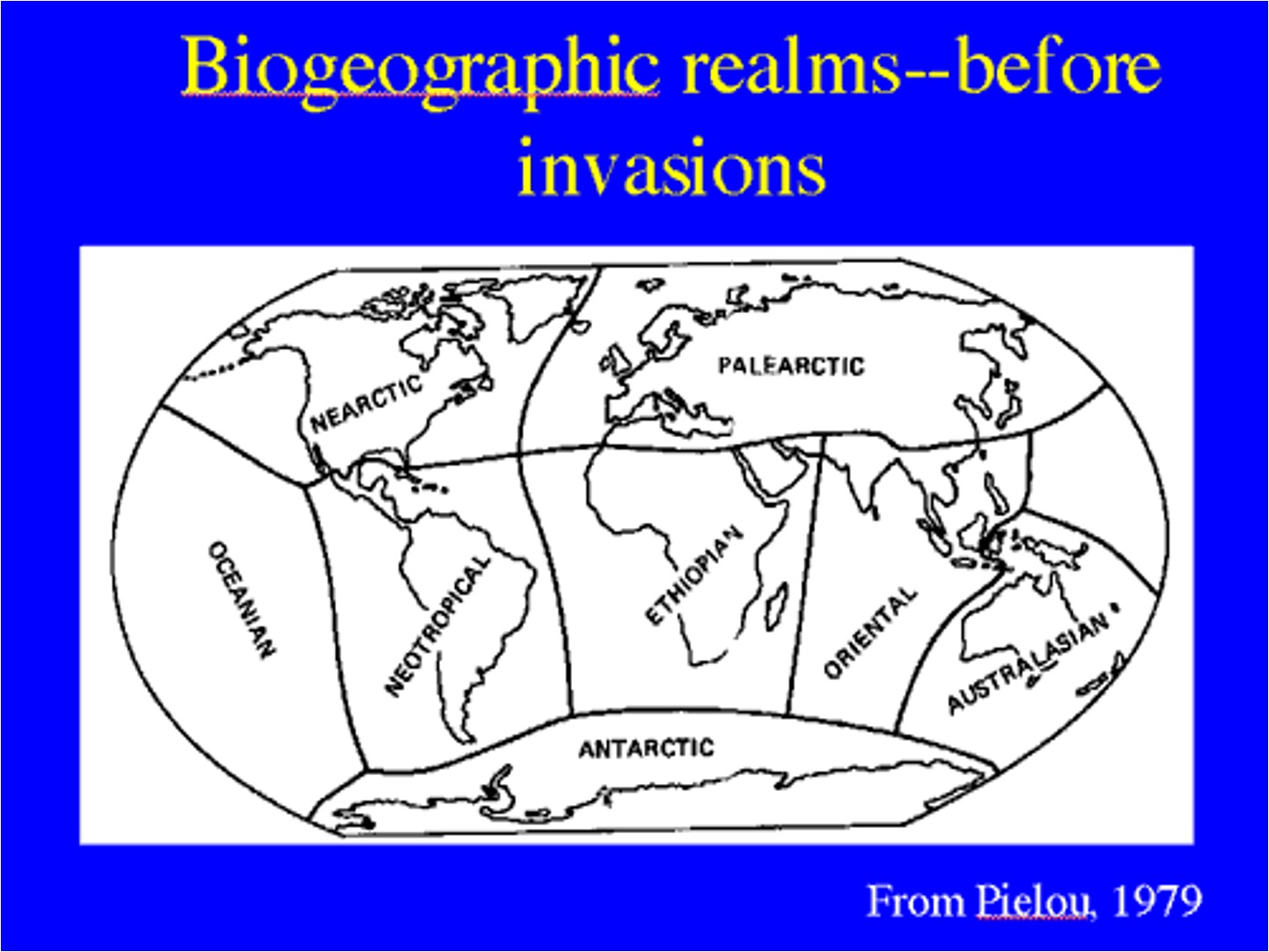
What is this?
Biogeographich realms before invasions
What biogeographic realm is North America in?
Nearctic
Convergent evolution is what?
the process whereby organisms not closely related, independently evolve similar traits as a result of having to adapt to similar environments or ecological niches.
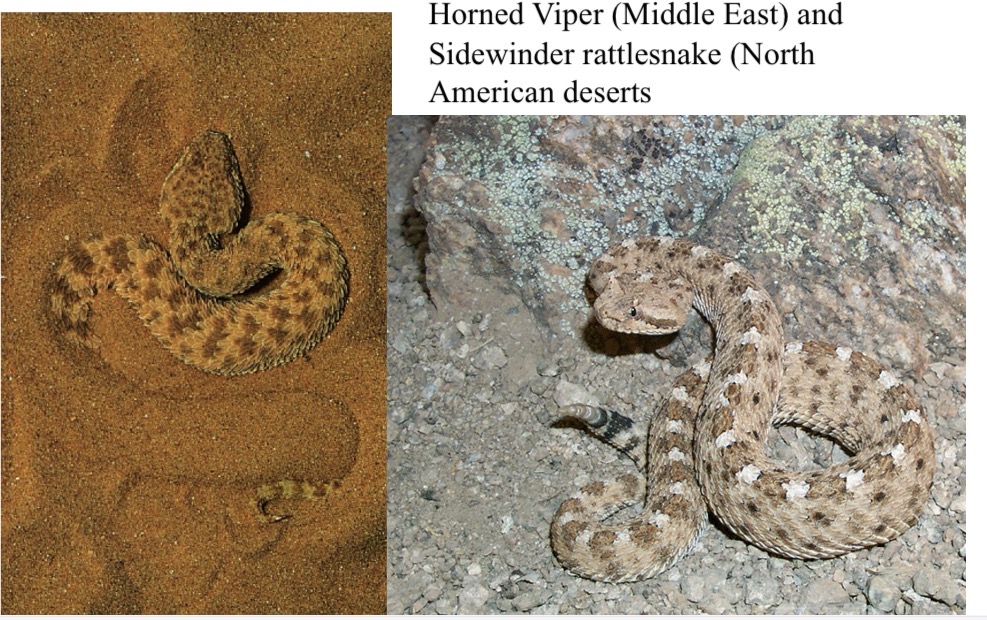
What is this an example of?
Convergent evolution
Adaptive radiation
rapid evolution of many diverse species from a common ancestor when new ecological opportunities arise.
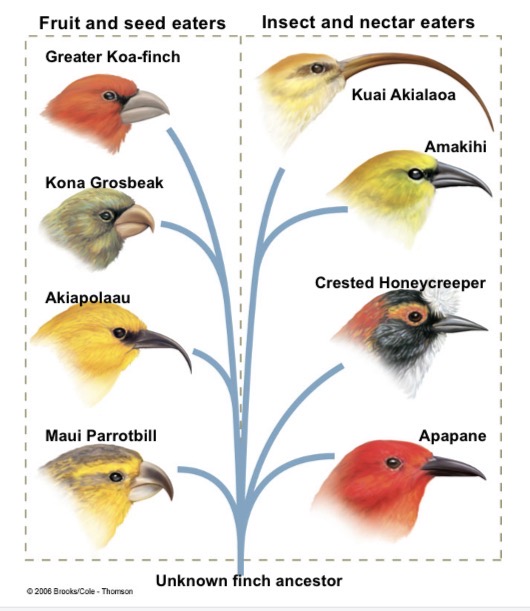
What is this?
An example of adaptive radiation
Background extinction rate
normal, baseline rate of species loss that occurs naturally over long periods of time, due to ecological and evolutionary processes (e.g., competition, predation, habitat change).
Major mass extinction events
•1) The Late Devonian
•2) Mid-Ordovician
•3) Permian-Triassic
•4) Late Triassic
5) Cretaceous-Paleogene.